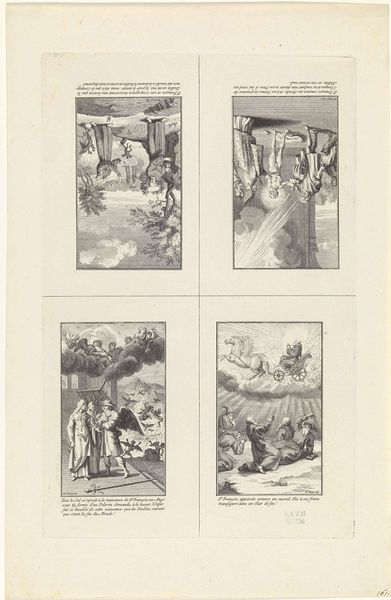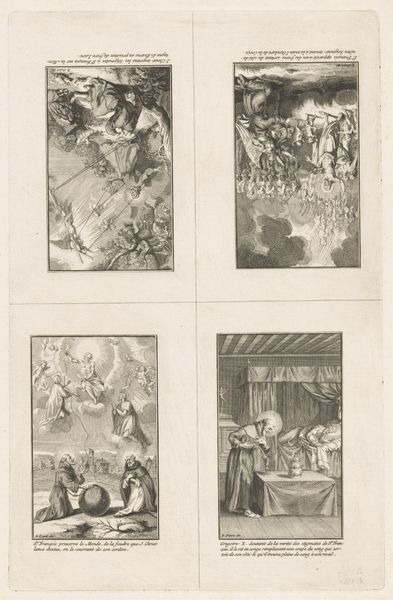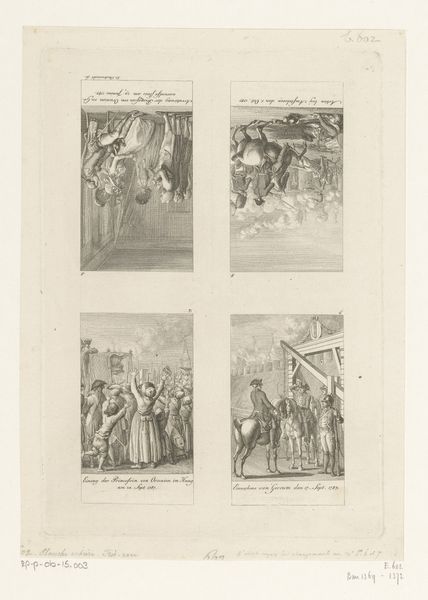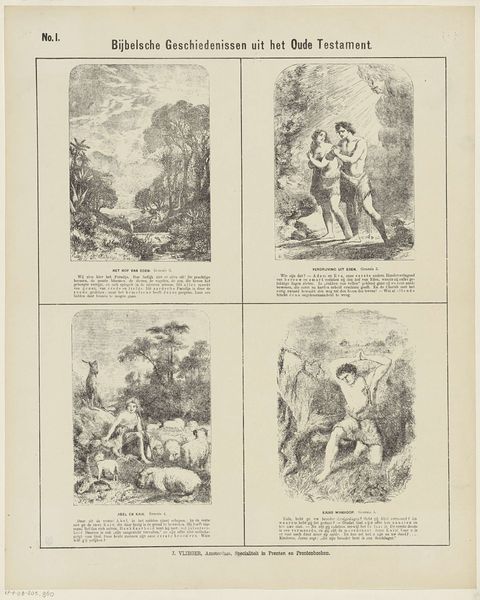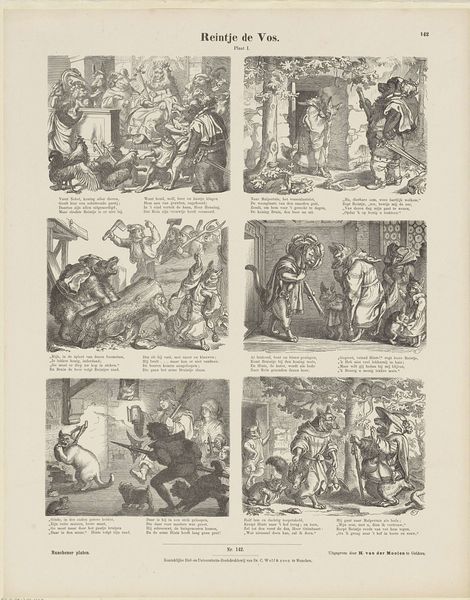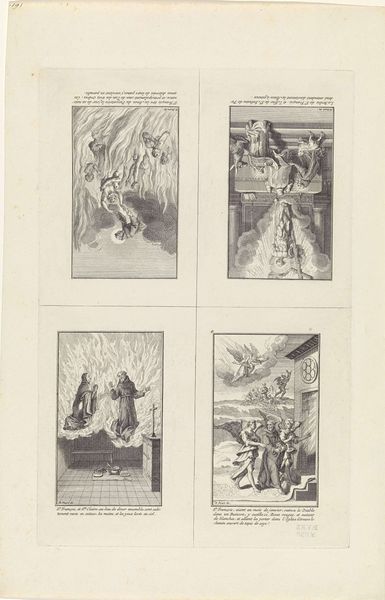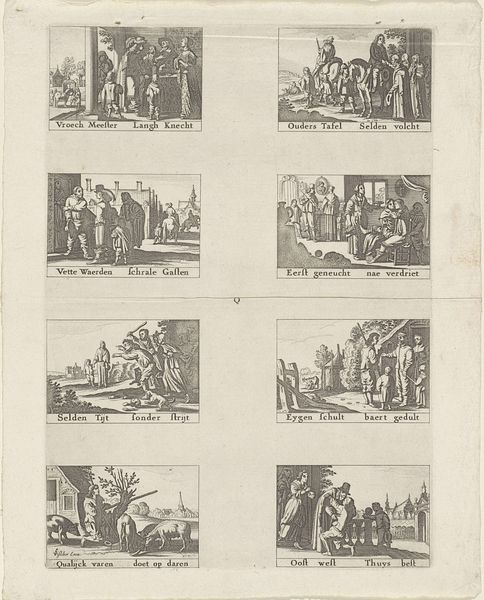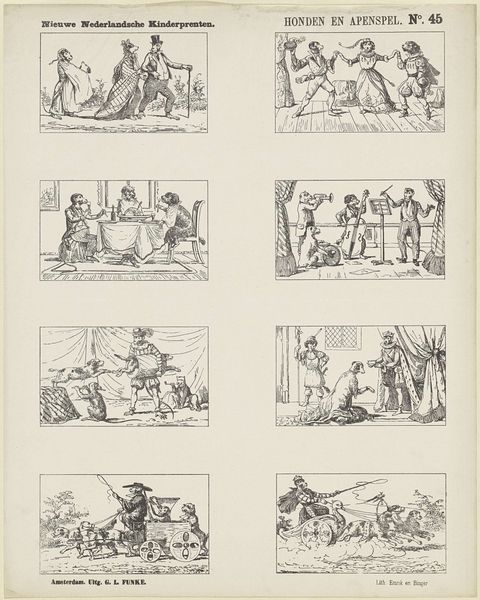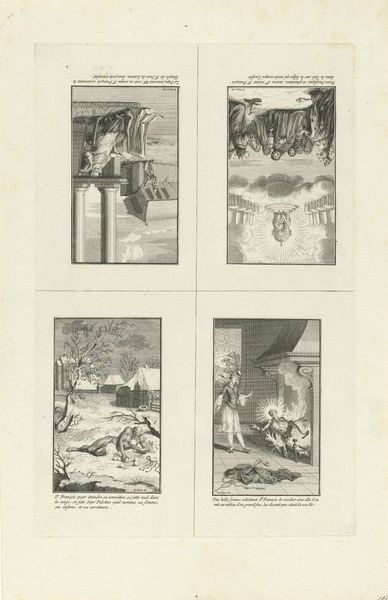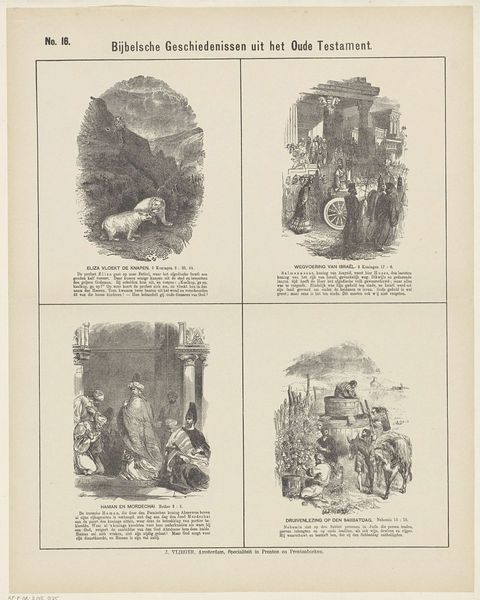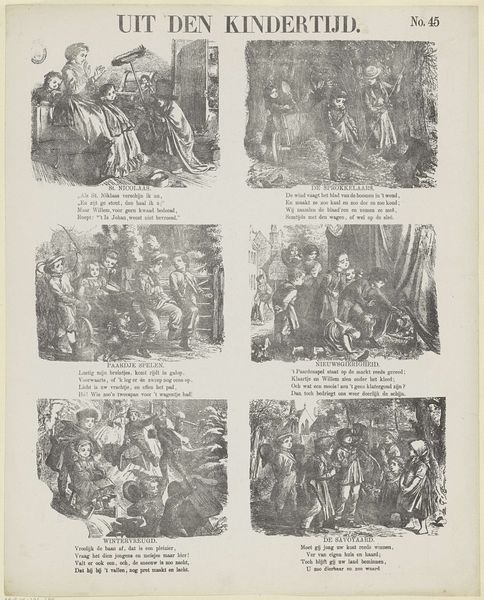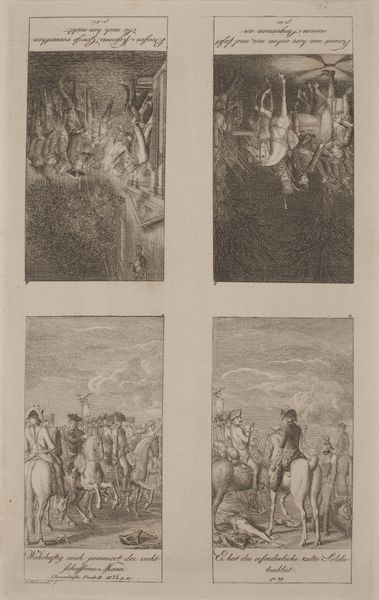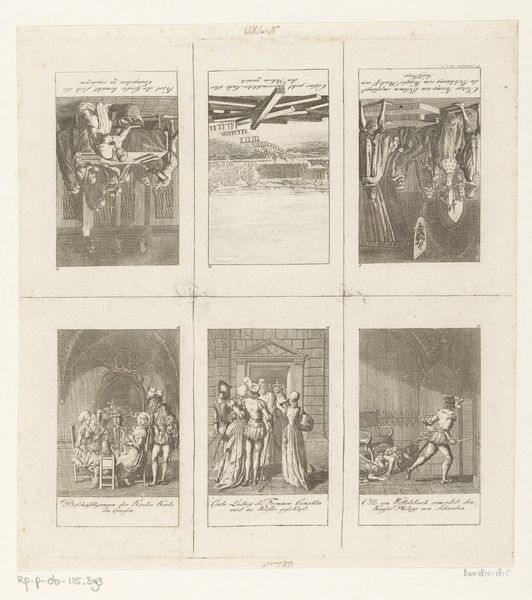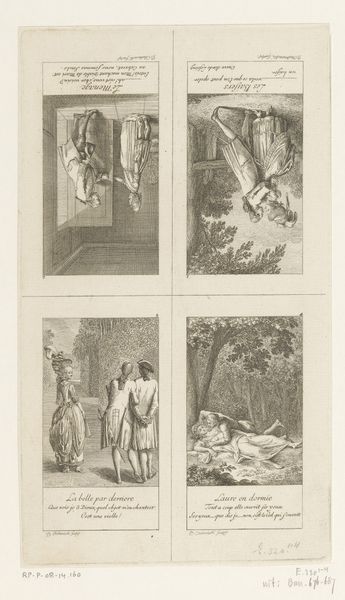
print, engraving
#
medieval
#
narrative-art
#
baroque
# print
#
old engraving style
#
figuration
#
line
#
history-painting
#
engraving
Dimensions: height 328 mm, width 215 mm
Copyright: Rijks Museum: Open Domain
Editor: So, this is "Scenes from the Life of Saint Francis of Assisi," an engraving by Bernard Picart from 1734. The scenes feel very formal and theatrical to me. What jumps out at you? Curator: The organization into four distinct scenes immediately suggests a narrative about power, religion, and their intertwined relationship. Given Picart's era and the subject matter, I think we have to consider the social and political functions of religious imagery at that time. How does this depiction reinforce or challenge existing hierarchies? Editor: That's interesting. I was focused on the visual storytelling, but I see your point. Is it fair to read each scene individually, or do you see them functioning together to convey a broader message? Curator: Both! The individual scenes show idealized moments from St. Francis's life, and yet when viewed as a whole, it creates a broader assertion of moral and ecclesiastical authority. The use of line engraving flattens the image and directs our eyes through each staged panel according to the narrative. What impact might that have on the viewer? Editor: It’s interesting you mention flattening. Does the “flattening” that you describe speak to power or submission? Curator: Perhaps both simultaneously. Religious iconography often presented an idealized version of life to influence the moral direction of people. Here we see idealized power and its use. Consider what those choices meant for people experiencing socio-political disparity. Editor: So, the artist seems to suggest how St. Francis may have approached certain conflicts. Curator: Exactly. Looking closely, do the choices Picart made potentially celebrate and/or subvert those existing power dynamics? Editor: I hadn't really thought of it that way. I was too caught up in the aesthetic. Curator: Which is important, too! But art always exists within, and responds to, a context. Hopefully, you'll view artwork a little differently now. Editor: Definitely, and I'm very grateful for this new understanding. Thanks!
Comments
No comments
Be the first to comment and join the conversation on the ultimate creative platform.
